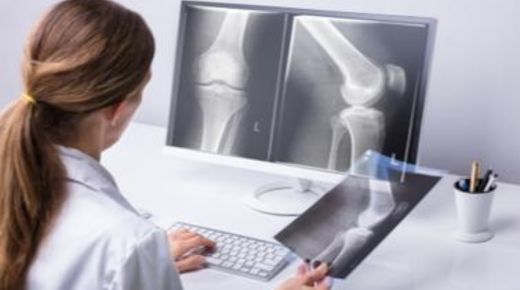CR, or Computed Radiography, plays an essential role in modern medical diagnostics. It merges the gap between traditional film-based radiography and the advancements in digital imaging.
As healthcare systems worldwide aim to improve patient care and diagnostic accuracy, CR X-ray offers a reliable, cost-effective, and efficient method for producing high-quality images for medical evaluation. This article discusses CR in more detail to better understand it.
What is Computed Radiography?
Computed radiography is a type of digital imaging used for medical, veterinary, and dental diagnostics. It uses a distinct X-ray-sensitive photo-stimulable phosphor plate, which is also called an IP or imaging plate. An IP reader or a CR X-ray reader machine is designed for processing and digitizing X-ray images. It takes less time and offers high-quality images.
How Does CR Radiology Work?
In CR radiology, electrons are released in the phosphor material when the X-rays are irradiated on the imaging plate. These are then stored in states of high energy. A laser beam scans the image-creating plate, and then a PMT transforms the visible light into electronic signals. The latter is processed to create high-contrast, high-quality images.
Large-format imaging plates are used for medical imaging. These include 8”x10” to 17”x17” sizes. In emergency situations, CR or Computed Radiography systems can be especially valuable due to their speed. They provide near-instant access to images, allowing quick diagnosis and treatment decisions, which can be important for trauma patients.
Types of CR X-ray Machines
Some major types of X-ray machines are:
- CR 10-X: It guarantees excellent image quality and uses SmartRotate for optimal cassette orientation.
- CR 12-X: This CR x-ray machine helps balance image resolution and speed with zero compromise on quality.
- CR 15-X: It ensures up to 60% of dose reduction. It is a compact system that supports a wide range of applications.
- CR 30-Xm: It is a table-top, single-slot digitizer that handles general and digital mammography applications at a high resolution.
CR for Medical Diagnostic Accuracy
A key benefit of computed radiography is the quality and detail of the images it produces. CR x-ray machine allows for the capture of high-resolution images, providing more information to radiologists and physicians for accurate diagnoses. The ability to digitally modify images aids in identifying abnormalities or subtle changes that may not be visible in traditional film.
This improved diagnostic capability is essential in detecting early stages of diseases like fractures, cancers, or lung conditions. Since medical images can be easily shared across departments or even with remote specialists, CR facilitates timely consultations and second opinions, ultimately benefiting patient outcomes.
The Other Benefits of CR Radiology
The basic advantages of computed radiography are:
- The same plate can be utilized for more than once. This makes the process way more cost-effective.
- CR does not need a dark room to develop the chemicals, making the process more logistically friendly.
- The images produced by CR can be stored and modified electronically.
- The images have better exposure latitude, dynamic range, and lower patient exposure.
Final Words
Computed Radiography has enhanced medical diagnosis by offering an efficient and cost-effective imaging solution. Its ability to produce high-quality images, along with the ease of digital storage and sharing, has truly made it an indispensable element in healthcare.

